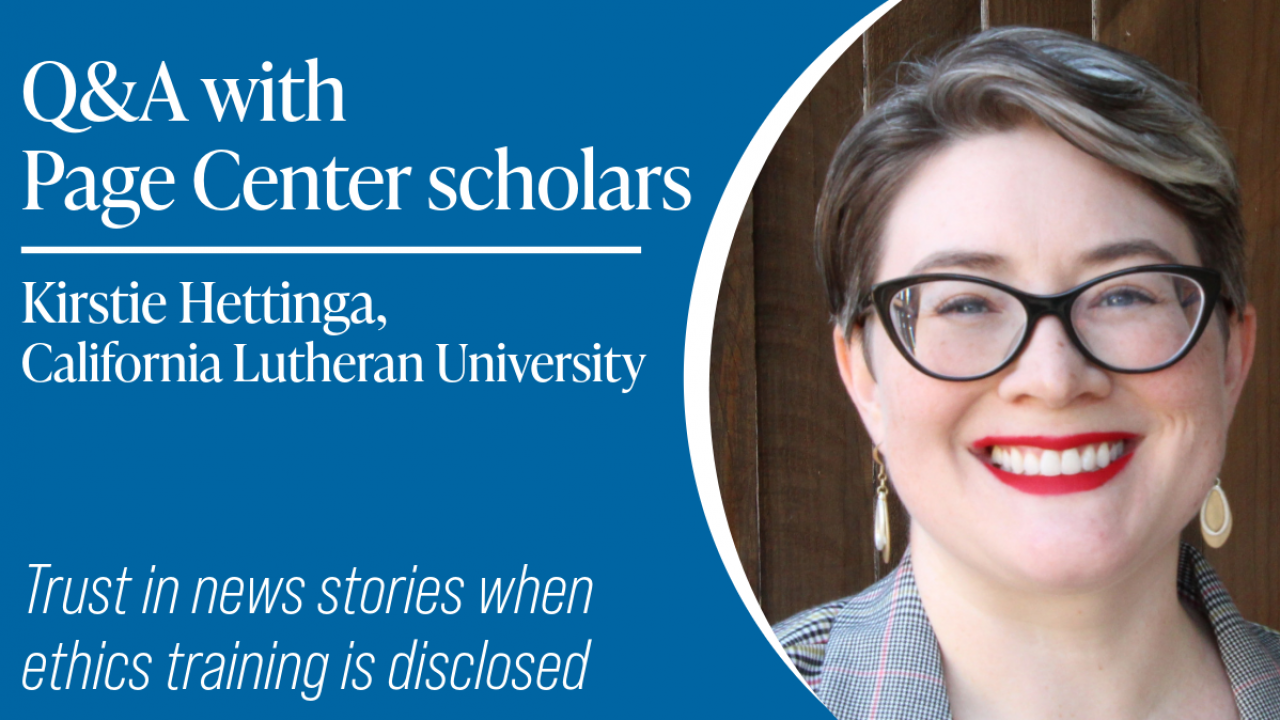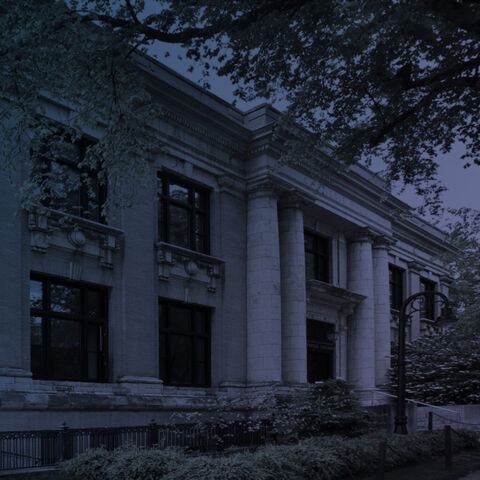August 13, 2024
Reader reactions to ethics training disclosures in news stories – Scholar Q&A with Kirstie Hettinga

For more than 10 years, scholars Alyssa Appelman, University of Kansas, and Kirstie Hettinga, California Lutheran University, have worked together on research examining transparency in digital and print journalism. In their most recent Page Center project, they are studying how ethics training disclosures in a news story affects reader perceptions about the article – specifically the readers’ trust in the information. The two-time Page Center scholars are teaming up with Trusting News, an organization that provides resources to help journalists build trust with their audience. The project is part of the Page Center’s 2024 research call on ethics training in public relations, journalism, advertising and strategic communication. In this Q&A, Hettinga discusses the origin of the project, the research plan and the collaboration with Trusting News.
You and Alyssa have been working together for more than 10 years. How did that collaboration start?
Alyssa and I are both alums of the Bellisario College. The funny thing is that we never actually went to class at the same time. When incoming grad students are trying to decide if they are going to go to Penn State, they get paired with a current grad student, and that person takes them to a meal. So, Alyssa was an incoming student, and I took her to get Thai food and we got to chatting. I was then ABD and left, but I remembered talking with her and being interested in similar things. While I was at my first job, I reached out to her and that's how we ended up collaborating.
How did your previous research lead to your current Page Center project?
A lot of the research that Alyssa and I have done over the years has had to do with various forms of transparency. Historically, we've looked closely at things like corrections in news articles as a form of transparency. But branching out, we're interested in other transparency efforts too, and there's been a variety of research that has looked at things like transparency boxes. These are boxes that describe to a reader the efforts that a journalist put in to get a story. It’ll say who was contacted as a potential source, who responded and who didn't, among other things. It explains the editorial decision making. One thing that has not been explored is the disclosure of journalists’ ethics training. So, if the goal is to rebuild trust in news media, will audiences be more inclined to trust work if a journalist discloses that he or she has had training in ethics?
What do you know about transparency boxes and their effectiveness?
Admittedly, most transparency efforts or the research that has been done has shown relatively limited effects. What we're really excited about is partnering up with the organization, Trusting News. They're going to help inform our research. Trusting News has done a lot of work to make toolkits for current working journalists and educators. The kits have various tools for building trust. One of the things that Trusting News advocates for is not just a journalist biography, which has become quite common, but a journalistic mission statement.
What other things does Trusting News do in addition to the toolkits?
They do a lot of different things. Their focus is on transparency engagement, and I think this is really interesting. The main thing that they focus on is training, so they do various education efforts. They will partner with newsrooms to help with their toolkits and that sort of thing. Plus, they have a fantastic newsletter that people can subscribe to that gives information about different resources. It’s a really great organization.
Your project is a two-part study, can you walk us through your plan?
For this study, we plan to conduct two experiments where participants read news articles next to reporter mission statements. In the first experiment, the mission statements will vary based on ethics training (low level vs. high level) and career stage (early vs. mid vs. late). For the second experiment, we are looking at ethics training and type of content (hard news vs. soft news). Our goal is to do the study about ethics training and career stage to find out which is the most effective combination. And then that might help us write the mission statement, which will have different variables when we're comparing hard news and soft news coverage. There's a lot of directions we think this could go, and we're really intrigued by the potential impact of reporter demographic variables, connection to audience, and that sort of thing as well.
Lastly, how does the Page Center support help you with this project and help you achieve your research goals?
This is our second grant with the Page Center, and we love the fact that the Center sees the connection between journalism and public relations. I know it’s primarily an organization that focuses on public relations, but journalism and public relations have a very symbiotic relationship. They work together, and really, they have a lot in common. So, we love the fact that the Page Center does calls that are also specific to journalism as well. The idea of building trust in journalism is a kind of public relations, right? It is efforts by journalists to build relationships with their audiences. So, journalism can learn from public relations and from things like the Page Principles. They closely align with ideas in journalism as well.

